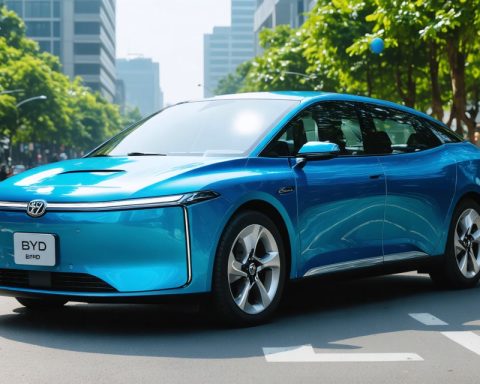California has taken a giant leap in clean energy innovation with the opening of its first operational green hydrogen plant in the United States. The groundbreaking facility, named SoHyCal, is located in California’s Central Valley and owned by H2B2 Electrolysis Technologies. This plant is expected to produce three tons of hydrogen daily, setting a new standard for sustainable energy production in North America.
Breaking New Ground with Solar Energy
SoHyCal utilizes cutting-edge proton exchange membrane (PEM) electrolysis technology, powered entirely by a solar energy system. This not only creates a sustainable cycle of hydrogen production but also powers the operation itself, marking a significant stride towards decarbonization. By generating enough hydrogen to fuel a fleet of 100 vehicles for cross-country travel daily, the plant exemplifies the future of clean transportation.
A Model for Green Transportation
Under Ingeteam’s expert guidance, SoHyCal is poised to transform hydrogen fuel technology dramatically, especially in transportation. It aligns with California’s vision of reducing emissions by promoting clean energy sources. Plans are underway to build hydrogen refueling stations across the state, ensuring that hydrogen-powered vehicles can seamlessly transition into mainstream use, thus improving air quality and reducing dependency on fossil fuels.
Leading the Global Shift
The implications of SoHyCal’s success are global. As an influential model in the Hydrogen Valley Platform’s global database, it serves as inspiration for similar projects worldwide. With the hydrogen market predicted to reach trillions of dollars within the next decade, H2B2 is setting a global benchmark. As industries seek robust and efficient alternative fuel solutions, hydrogen’s appeal continues to grow, reflecting a promising shift towards sustainable energy solutions.
Unintended Consequences of Hydrogen Energy: Is It the Silver Bullet?
The Other Side of Hydrogen Energy
While California’s inauguration of the SoHyCal hydrogen plant marks a new chapter in sustainable energy, the adoption of hydrogen as an alternative fuel source poses questions that often fly under the radar. The enthusiasm surrounding green hydrogen, largely due to its ability to fuel transportation and reduce carbon emissions, belies a more complex narrative. This article explores the intricacies and challenges of this burgeoning technology that may have significant effects on communities, industries, and global energy policies.
Environmental Impact: Is Green Always Green?
The manufacturing and operation of green hydrogen facilities, while far superior to their fossil fuel counterparts, are not without environmental concerns. The reliance on vast solar arrays for energy could alter land use significantly and impact wildlife habitats in large, natural areas. Furthermore, the immense water requirements for hydrogen production in regions already experiencing water scarcity invite scrutiny. Can green hydrogen be sustainable if water use intensifies regional droughts? While California might be pioneering in one area, it’s essential to address these new environmental tensions.
Economic Disparities: Who Stands to Gain?
Hydrogen’s emergence as a key player in the energy sector has the potential to generate vast economic opportunities. However, it raises pertinent questions about equitable growth. Just as the benefits of emerging technologies have often been unequally distributed, will green hydrogen inadvertently widen economic gaps? With large-scale projects like SoHyCal, financial and technology investments may be concentrated among a few, leaving small communities and less developed regions on the periphery.
Communities adjacent to these plants might experience shifts in their local economies and job market. As hydrogen infrastructure develops, are communities equipped or prepared to adapt, and what role should policymakers play in smoothing this transition?
Is Hydrogen Truly Ubiquitous?
The global appeal of hydrogen energy suggests a promising future for this technology. Yet, the logistical challenges surrounding hydrogen transport and storage remain formidable. Hydrogen gas is notoriously difficult to contain due to its low energy density and tendency to leak from conventional containers. Are current infrastructure developments addressing these issues adequately? Safe and cost-effective storage solutions are paramount if hydrogen is to be adopted on a global scale.
Moreover, stringent regulations and safety protocols must be enforced to manage these challenges, ensuring that safety does not become a barrier to widespread implementation.
Public Perception: An Uncertain Frontier
Public acceptance poses a slippery slope in the widespread adoption of hydrogen. Many people still associate hydrogen with its volatile nature, such as in the case of the infamous Hindenburg disaster. A substantial effort in education and transparent dialogues about safety measures will be essential to change hearts and minds. So, how can stakeholders best engage the public to foster trust and understanding of hydrogen technology?
Where Do We Go From Here?
The tidal shift towards hydrogen is set against a backdrop of rapidly evolving energy technologies. While projects like SoHyCal in California demonstrate admirable progress, it’s imperative to keep in perspective both the promises and pitfalls. Is hydrogen the definitive clean energy source, or merely a stepping stone?
For further exploration of alternative energy innovations, consider visiting Energy.gov or Hydrogen Council. These platforms provide further insights into ongoing advancements and initiatives within the hydrogen economy and beyond.














